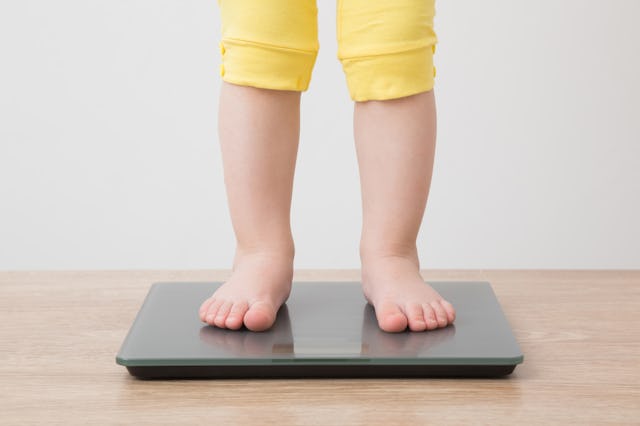Rates Of Childhood Obesity Are On The Rise
A new study finds that more children are becoming obese, and at earlier ages.

A new study shows that the rate of childhood obesity is going up in the U.S., and that children are becoming obese at earlier ages. A significant number of kids are impacted, with 40% of today's teens and young adults qualifying as overweight or obese before the end of elementary school.
For the study, published in the journal Pediatrics on July 5, researchers followed two groups of children from kindergarten through fifth grade. One group was followed from 1998-2004 and the second from 2010-2016. The groups were nationally representative of the overall U.S. population.
Compared to the earlier group, the second group "experienced obesity at even higher levels, at younger ages, and at higher severity during these developmentally important stages of childhood," says Solveig Cunningham, lead author of the study, who is a professor of global health at Emory University. Children of color were at the greatest risk of developing childhood obesity, according to the study, with non-Hispanic Black children being 29% more likely to develop obesity in the 2010-2016 group than the 1998-2004 group. The risk for the poorest group of children went up 15%, but the risk for wealthiest children also rose, proving that kids of all income levels are at risk.
This is bad news for the doctors, policy makers and parents who, over the past decade, have put so much effort into campaigns that focus on improving kids' nutrition and encouraging exercise, including Michelle Obama's “Let's Move!” initiative.
While obesity in adults is defined as a Body Mass Index (BMI) of 30 or above, obesity in children is diagnosed when a child's BMI puts them over the 95th percentile for their age group. Growth curve charts developed by the CDC, which were last revised in 2000, show how your child's weight, height and BMI compare to those of children their age. These are the charts that your child's pediatrician references during their annual visit.
Children and adults who are obese are more likely to develop health conditions such as Type 2 diabetes and hypertension. Obese children are more likely to become obese adults, and to develop or suffer from these conditions later in life. They are also more likely to have obese children of their own.
"As these youths become parents, intergenerational transmission of obesity may affect children born in the 2030s and 2040s," says Cunningham.
There has been criticism of the use of BMI as a screening tool. Critics say that BMI measurements aren't the most accurate predictor of health problems, and that the data used to calibrate the index fails to account for gender differences and racial diversity. A committee of the British Parliament even recommended last year that the National Health Service stop screening patients using BMI.
BMI is also a source of shame for many parents and children, and body-shaming can actually lead to more weight gain, in addition to emotional suffering.
Since it appears that current efforts, which focus on the individual choices kids and families make about food and exercise, have not been effective at reducing rates of childhood obesity, some advocates are calling for solutions that focus on structural factors, such as food systems. Perhaps our country needs to focus less on weighing and measuring individual kids, and more on dismantling systems that make it hard for people to access healthy foods and opportunities for exercise.
This article was originally published on